
How to Recover Deleted Files from Android Phone Internal Memory [2025]

"I created a Docs folder in the Document folder, then deleted that. After that, the Document folder is delivered too, which I want to restore. How to restore deleted files from internal storage?"
- From Google Community
Imagine you've just deleted an important file from your Android phone, and you realize it was irreplaceable. If you're like most people, you might panic at the thought of losing crucial data. But before you jump to conclusions, there's hope. Whether it's a forgotten photo or a lost document, recovering deleted files from Android's internal memory is possible, and it might be easier than you think. In this guide, we'll walk you through everything you need to know about how to recover deleted files from an Android phone internal memory - whether you have a backup or not. Let's dive in.
The short answer is yes, but with some caveats. When you delete a file from your Android phone, it isn't immediately erased from the internal storage. Instead, the space it occupies is marked as "available" for new data. Until that space is overwritten, the deleted file can often be recovered using the right tools and techniques.
However, the sooner you act, the better your chances of recovery. Continuous use of your phone, such as taking new photos or downloading apps, can overwrite the deleted data, making it irretrievable. So, if you've lost something important, stop using your phone immediately and follow the steps below.
Did you know that some Android devices have a built-in Trash or Recycle Bin feature, similar to computers? If your phone runs on Android 11 or later, you might be able to recover deleted files within 30 days without any third-party tools. Here's how to recover deleted files in an Android phone internal memory from Trash:
Step 1. Open your Gallery or File Manager (depending on the type of file you want to recover).
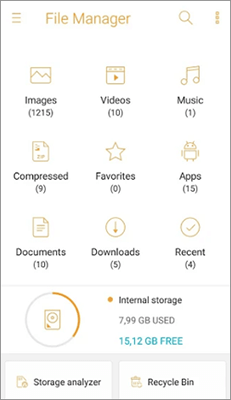
Step 2. Navigate to the Trash or Recently Deleted folder.
Step 3. Browse through the files to find the ones you want to restore.
Step 4. Tap on "Restore" to recover your deleted files
Note: If you don't see the Trash option, your device might not support this feature. Don't worry - there are other methods to try.
If you've already emptied your Trash or didn't have the Trash feature enabled, don't despair. You can still recover deleted files using third-party data recovery software like Coolmuster Lab.Fone for Android. Coolmuster Lab.Fone for Android is a powerful data recovery tool designed specifically for Android devices. It allows you to recover deleted files from your Android phone internal memory without backup on a regular basis.
Here's why it's a great choice:
How to recover deleted data from an Android phone internal memory with this software?
01Download and install it on your computer. Tap the "Android Data Recovery" mode after you open the app.
02Connect Android device to PC via USB cable before enabling debugging on the handset (skip it if you have already enabled debugging). This step helps build the connection between your phone and PC.
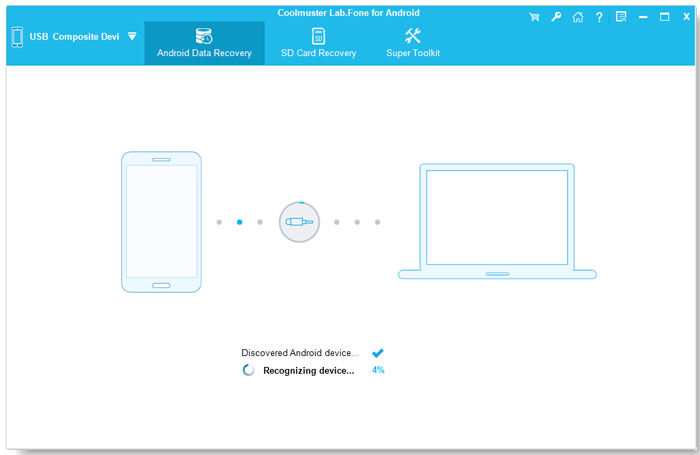
03After completing the previous steps, you may be directed to the interface below. Here, you can select the specific file types containing the data you wish to recover, then click "Next" to proceed.
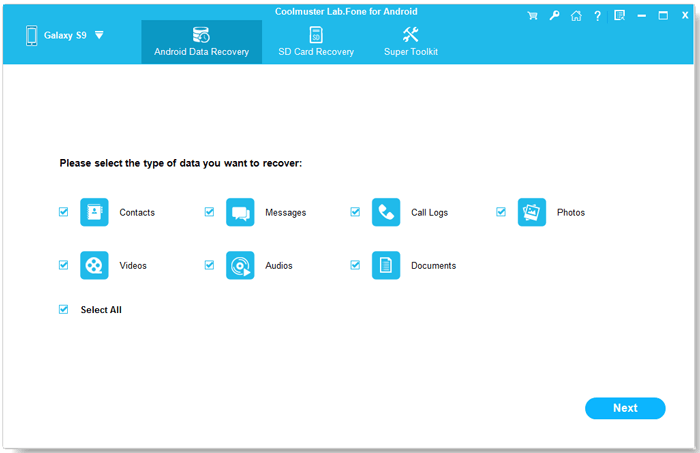
04Now, choose between "Quick Scan" or "Deep Scan" mode based on your needs to scan your device. After making your selection, click "Continue" to initiate the scanning process. If you want to scan all the data on your phone, you must root your device.
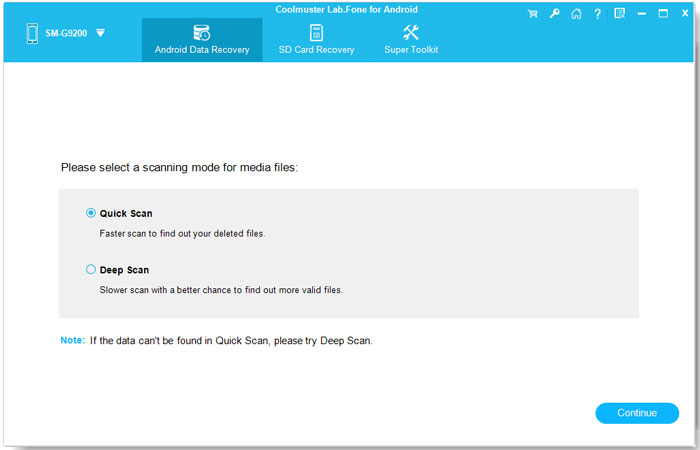
05Once the scan is complete, you can see the items including contacts, messages, and call logs on the left of the interface. Just choose either of them to preview and mark the exact items for rescue. Certainly, you can click the "Only display the deleted item(s)" button to check lost data as well. Then click "Recover" to get back the files you want to retrieve.
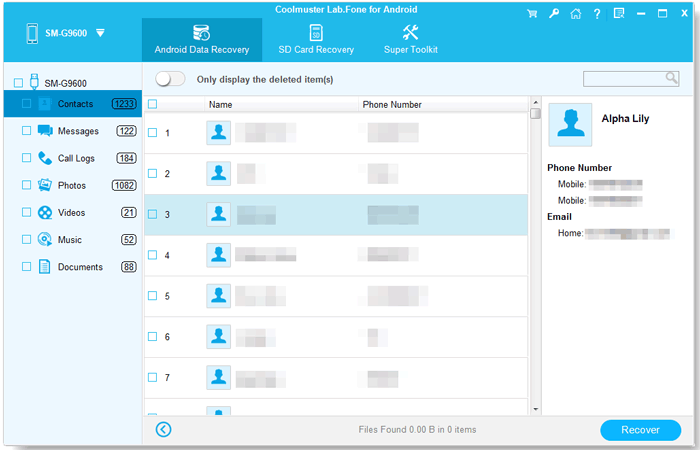
Video Tutorial:
If you have been regularly backing up your Android device, either through Google services or other cloud solutions, recovering deleted files becomes much easier. Android phones usually back up contacts, photos, and apps to Google Drive or similar services, meaning you can retrieve your lost files if they were included in your last backup.
Steps to recover data from Android phone internal memory from Google Backup:
Step 1. Go to "Settings" > "Google" > "Backup".
Step 2. Check your backup settings to ensure your files are being regularly backed up.
Step 3. If you're restoring photos, open Google Photos, and look for the "Trash" folder.
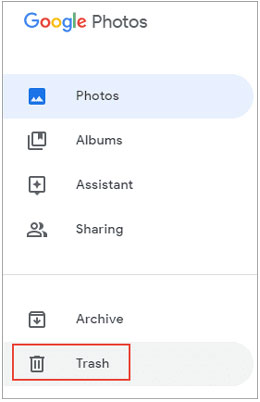
Step 4. To restore other files, go to Google Drive and check if they're available there.
1. Where do permanently deleted files go in Android?
When you permanently delete a file, it's removed from the file system, but the data remains on the internal storage until overwritten.
2. Can permanently deleted files be recovered?
Yes, permanently deleted files can be recovered, but the chances of success decrease if new data has overwritten the deleted files. That's why acting quickly is crucial to maximize the chances of recovery.
3. How long does it take to recover deleted files from Android?
The recovery time depends on several factors:
Typically, the recovery process can take anywhere from a few minutes to a couple of hours.
4. How do I prevent losing important files in the future?
To prevent losing important data in the future, here are a few tips:
Losing important files from your Android phone can be stressful, but as you've learned, recovery is often possible - whether through built-in features like Trash, third-party tools, or backups. Remember, the key to successful recovery is acting quickly and avoiding further use of your phone until the files are restored.
If you're looking for a reliable and user-friendly solution, we highly recommend Coolmuster Lab.Fone for Android. It can help you recover files even without backup. Give it a try now.
Related Articles:
How to Recover Deleted Files on Android without Computer and Root?
How to Make Samsung Internal Memory Recovery in 3 Reliable Methods?
How to Recover Deleted Photos from Android Internal Storage? [5 Ways]
How to Access Internal Storage on Android with Top-Rated Approaches





